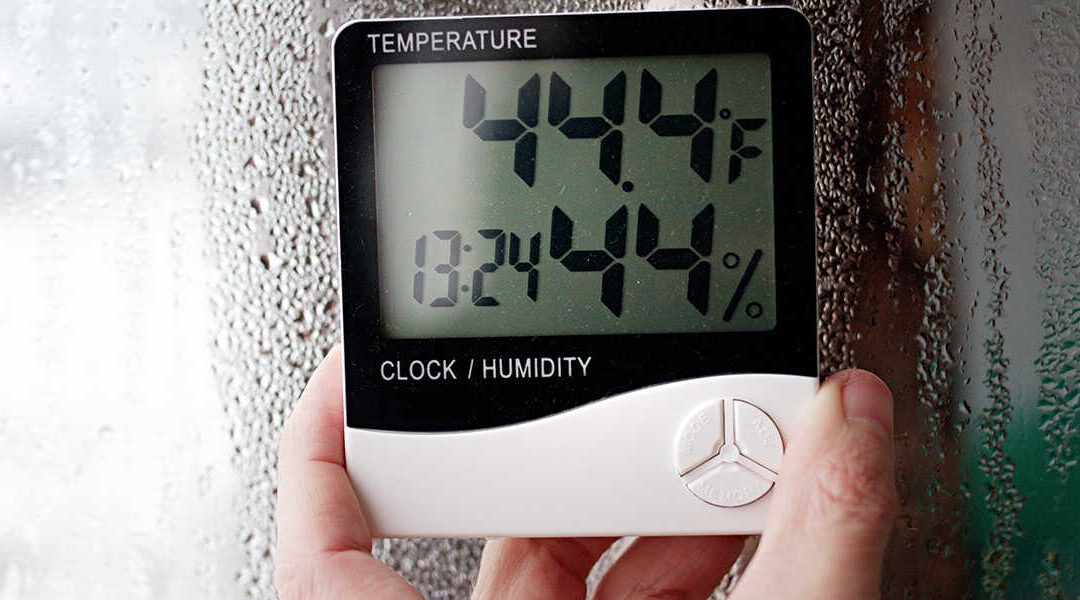Do you need help balancing your home’s humidity levels? Call SM Mechanical Services at (860) 530-2792 to schedule a consultation.
The humidity levels within your home can influence your overall comfort while indoors. Allowing the levels to veer toward extremes may also cause damage to your home and a range of health issues. Therefore, it’s imperative for homeowners to prevent these humidity extremes.
The surest way to monitor humidity levels is to measure the readings. As West Hartford’s trusted HVAC services provider, you can rely on us to teach you how to measure humidity at home. We’ll cover the details in this post, as well as what to do if the humidity levels in your home are too high or too low.
Use a Hygrometer
A hygrometer is a special indoor air quality device that measures humidity levels in percentages. You can order one from your local hardware store or a home appliance retailer online.
The hygrometer measures relative humidity levels by calculating the air’s moisture content. The exact system of measurement depends on the type of hygrometer. However, they all fulfill the same purpose.
Using the hygrometer is as simple as placing it in the room you’d like to test and checking the results. The ideal humidity level for the summer is 60%. If you’re measuring in the winter, confirm that the reading is around 25-40%.
Perform the Ice Cube Test
Indoor hygrometers can cost up to $1400. Therefore, it’s understandable if you don’t want to spend money on one. You can still measure the humidity levels with DIY methods like the ice cube test.
You won’t get the relative humidity in percentage terms, but you’ll know whether the room is too dry or humid. Here’s how to measure humidity at home with the ice cube test:
First, fill a glass of water and put four to five ice cubes inside it. Next, place the glass of water on a table in the room in focus and wait ten minutes.
Excessive condensation on the glass signifies high humidity levels, while a lack of condensation signifies low humidity levels.
Check For Physiological and Physical Signs
Yet another approach for measuring humidity extremes without buying a store-bought device includes watching for signs around you and on your body.
Do you feel static electricity on metal or textile surfaces? Does your nasal passage feel too dry when you wake up? Maybe your houseplants always look too dry, even shortly after watering them. Your home’s humidity is likely too low.
Conversely, feeling hotter than the thermostat readings suggest, moisture inside your windows, and the smell of mold and mildew suggest high indoor humidity levels. Flaking paint is another sign of high humidity levels.
While none of these approaches guarantee pinpoint accuracy, they give you a pretty good idea of the humidity situation in your space. A hygrometer will back up your findings more often than not.
How To Combat Low Humidity Levels
Low humidity levels will leave your eyes feeling too dry and irritated. Your skin will get itchy, and you’ll also be more susceptible to airborne infections, including COVID-19. Around your home, low humidity levels increase the risk of your wooden floors, furniture, and drywalls drying out and cracking.
You can increase the humidity to the appropriate levels by doing the following:
Buy a Humidifier
A humidifier periodically introduces moisture into the air throughout your home for as long as it operates. Portable units are best if you are trying to maintain the humidity levels in one room (maybe your living room or bedroom). Otherwise, you should consider adding a whole-house humidifier to your HVAC setup.
Embrace DIY Tricks
An alternative to installing a humidifier is exploring ways to add some moisture to your home naturally. These include leaving the door open when doing your laundry, showering, using your dishwasher, or cooking.
If you don’t mind some gardening work, adding a few houseplants can help improve the humidity within any indoor space.
How To Combat High Humidity Levels
When the humidity levels around your space are too high, you’ll feel hotter than you should for the weather and more uncomfortable. As a result, you may experience lethargy, concentration difficulties, and more.
High humidity levels lead to poor indoor air quality by encouraging the growth of mold and mildew.
Here are some tips to lower your humidity levels:
Improve the Ventilation Indoors
More fresh air entering your home dilutes the levels of humidity. You can improve ventilation by opening a window or two and installing more fans around your home.
Avoid Possible Contributors to Indoor Humidity
Do you have house plants indoors? You should probably consider moving them outside to your patio or deck. You should also avoid using appliances like washing machines and dryers without ensuring proper ventilation.
Similarly, you should consider cooking outside if you have an outdoor kitchen and only use covered pots when cooking indoors.
Service Your Air Conditioner
You’re less likely to experience high humidity levels if your air conditioner runs optimally through the summer. So, call an HVAC technician to inspect your unit and give it a tune-up to ensure it’s in excellent shape for the weather.
Install a Dehumidifier
If the humidity levels are too far beyond your comfort range, the DIY tricks we’ve looked at above will not move the needle. Your air conditioner might also struggle a bit. A whole-house dehumidifier will bring the humidity levels down to manageable levels a lot faster.
Improve Your Indoor Air Quality With SM Mechanical Services
Knowing how to measure humidity at home is one thing; knowing how to bring the humidity readings to acceptable levels is another. However, you don’t have to go it alone. At SM Mechanical Services, we are always happy to provide solutions that will make your indoor climate more comfortable. You don’t have to feel humid with the AC on.
Call the SM Mechanical Services team in Glastonbury, CT, today at (860) 530-2792 to schedule a consultation.

